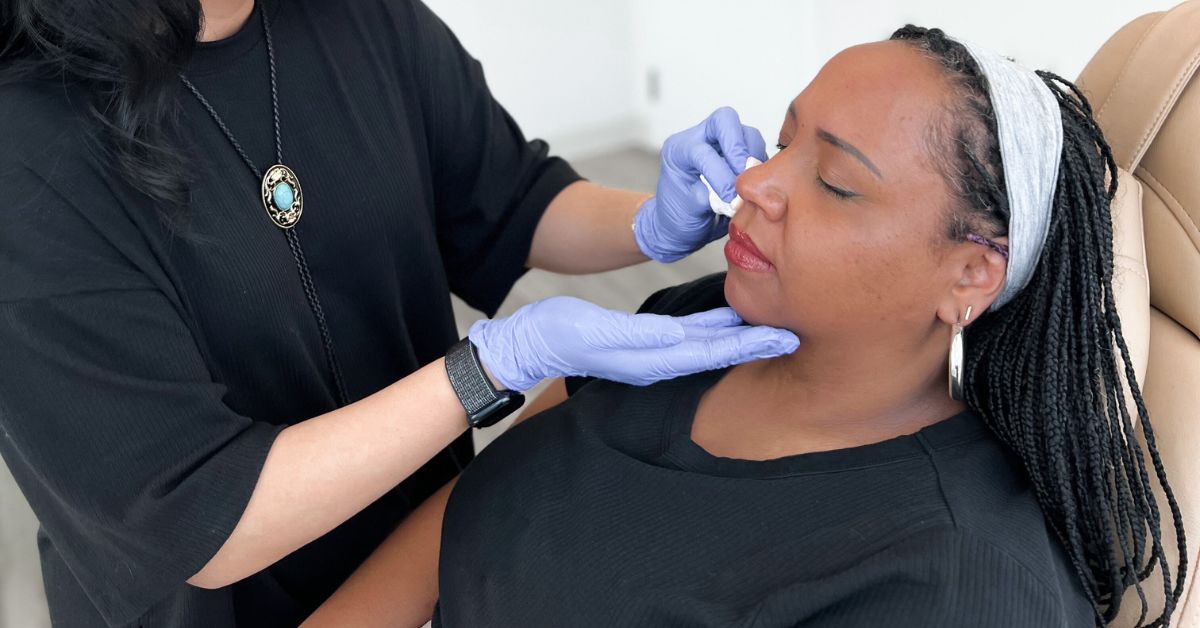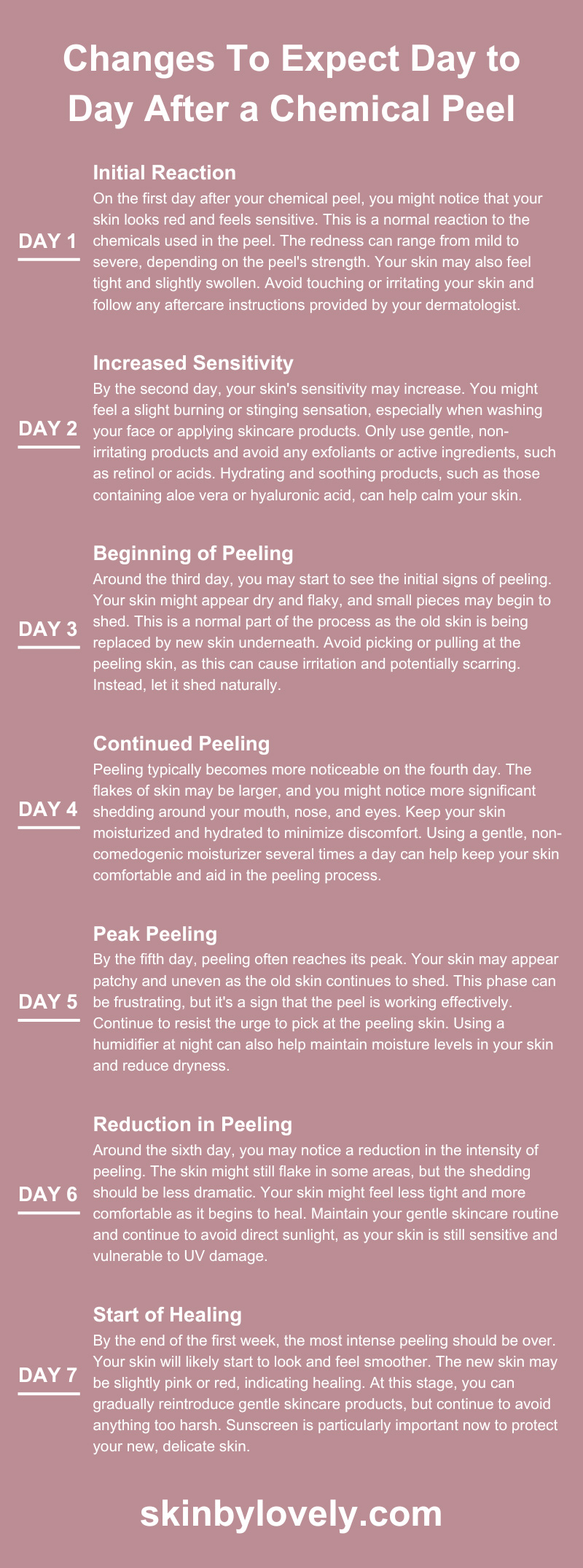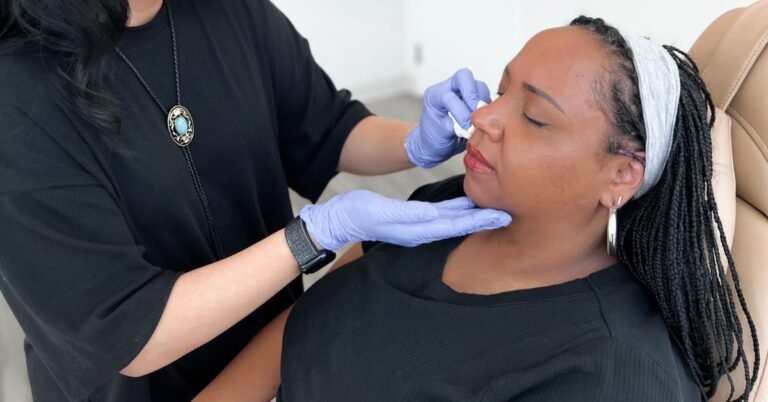
Chemical peels are a popular cosmetic treatment to improve skin texture and appearance. They involve applying a chemical solution to the skin, which causes it to peel and eventually peel off. This process reveals new, smoother skin underneath. While the results can be remarkable, understanding the day-to-day changes you will experience after a chemical peel is essential to managing expectations and ensuring proper care.
Day 1: Initial Reaction
The first day after your chemical peel, you may notice that your skin looks red and feels sensitive. This is a normal reaction to the chemicals used in the peel. Redness can range from mild to severe, depending on the strength of the peel. Your skin may also feel tight and slightly swollen. Avoid touching or irritating your skin and follow the aftercare instructions provided by your dermatologist.
Day 2: Increased sensitivity
By the second day, the sensitivity of your skin may increase. You may feel a slight burning or stinging sensation, especially when washing your face or applying skin care products. Use only gentle, non-irritating products and avoid any exfoliating or active ingredients such as retinol or acids. Moisturizing and soothing products, such as those containing aloe vera or hyaluronic acid, can help soothe your skin.
Day 3: Start Peeling
Around the third day, you may start to see the initial signs of peeling. Your skin may look dry and flaky and small patches may start to fall off. This is a normal part of the process as the old skin is replaced by new skin underneath. Avoid picking or pulling at the peeling skin, as this can cause irritation and possible scarring. Instead, let it flow naturally.
Day 4: Continuous Peeling
Peeling usually becomes more noticeable on the fourth day. Flakes of skin may be larger and you may notice more significant oozing around your mouth, nose and eyes. Keep your skin moisturized and hydrated to minimize discomfort. Using a gentle, non-greasy moisturizer several times a day can help keep your skin comfortable and aid in the exfoliation process.
Day 5: Peak Peeling
By the fifth day, the peeling often reaches its peak. Your skin may look patchy and uneven as the old skin continues to shed. This phase can be frustrating, but it is a sign that the peel is working effectively. Continue to resist the urge to pick at the peeling skin. Using a moisturizer at night can also help maintain moisture levels in your skin and reduce dryness.
Day 6: Reduction in Peeling
Around the sixth day, you may notice a reduction in the intensity of the peeling. The skin may still peel in some areas, but shedding should be less dramatic. Your skin may feel less tight and more comfortable as it begins to heal. Maintain a gentle skincare routine and continue to avoid direct sunlight as your skin is still sensitive and vulnerable to UV damage.
Day 7: Start of Treatment
By the end of the first week, the most intense peeling should be over. Your skin will likely start to look and feel smoother. The new skin may be slightly pink or red, indicating healing. At this stage, you can gradually reintroduce mild skin care products, but continue to avoid anything too harsh. Sunscreen is especially important now to protect young, sensitive skin.
Week 2: Continuous Recovery
During the second week, your skin will continue to recover and improve in texture and tone. Any remaining redness should gradually fade. Keep your skin hydrated and protected from the sun. You may notice that your skin feels more balanced and less sensitive. This is a good time to consult with your dermatologist about when to resume your normal skin care routine.
Week 3: Improved skin appearance
By the third week, you should see a noticeable improvement in the appearance of your skin. It should look smoother, more even and have a healthy glow. Any pigmentation issues or fine lines may be significantly reduced. Continue to follow a gentle skincare regimen and protect your skin from environmental stressors to maintain these results. If you experience any prolonged sensitivity, consult your dermatologist.
Week 4: Final results
By week four, the full results of your chemical peel should be apparent. Your skin should look refreshed, with improved texture and tone. Any previous concerns such as acne scars, fine lines or hyperpigmentation should be noticeably reduced. Maintain a consistent skin care routine and regular follow-up appointments with your dermatologist to keep your skin looking its best.
Long-term care
Long-term care is vital to maintaining the benefits of your chemical peel. Continue to use gentle, moisturizing skincare products and avoid excessive exfoliation. Regular use of a high SPF sunscreen is essential to protect your skin from UV damage and prevent premature aging. Consider incorporating antioxidants like vitamin C into your routine to boost your skin’s resilience and radiance.
Monitor for complications
While most chemical peels go smoothly, you should monitor your skin for any signs of complications. If you notice excessive redness, swelling, or signs of infection, contact your dermatologist immediately. Early intervention can prevent more serious problems and ensure your skin heals properly. Follow all aftercare instructions provided by your dermatologist to minimize the risk of complications.
Customize your skin care routine
After peeling, you may need to adjust your skin care routine to meet your skin’s new needs. Focus on hydration and barrier repair products to support your skin’s recovery. Gradually reintroduce active ingredients such as retinoids or AHAs under the guidance of your dermatologist. Adapting your routine to your current skin condition helps maintain the results of your chemical peel.
Maintenance of Results
To maintain the results of your chemical peel, consider incorporating regular maintenance treatments. Gentle exfoliation, facial hydration and periodic chemical peels can help maintain your skin’s improved appearance. Discuss with your dermatologist the best schedule for follow-up treatments to keep your skin looking its best. Consistency in skin care and professional treatments is the key to long-lasting results.
Benefits of Chemical Facial Peeling
Chemical facial peels offer many benefits, including improved skin texture, reduced pigmentation, and a more youthful appearance. They can treat various skin concerns such as acne scars, fine lines and sun damage. By regularly incorporating chemical facial peels into your skin care routine, you can maintain healthy, glowing skin. These treatments are a valuable addition to any skincare regimen to achieve and maintain beautiful skin.
Now that you know the daily changes to expect after a chemical peel, you can better prepare for the recovery process and enjoy the benefits of this treatment. By following proper aftercare and consulting with your dermatologist, you can achieve and maintain the best possible results from your chemical facial peel.


